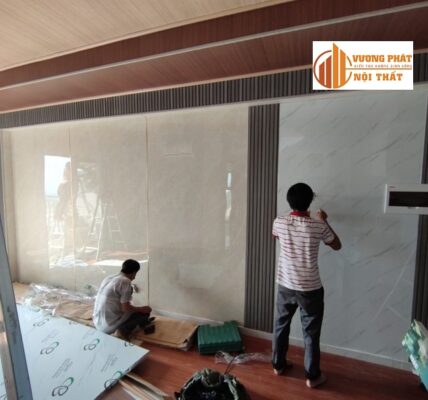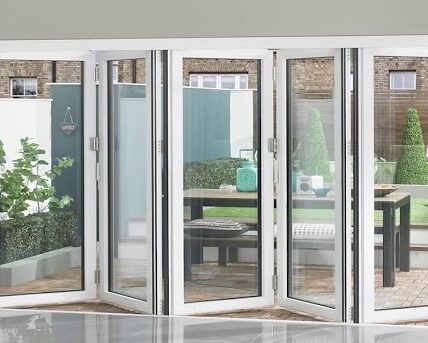Frameless sliding glass doors have emerged as a contemporary architectural choice, seamlessly blending style and functionality. Unlike traditional doors that rely on visible frames, page baobinhduong.top share these doors consist of large panels of glass that slide open effortlessly, creating an illusion of space and continuity between indoor and outdoor environments. The absence of bulky frames enhances the aesthetic appeal, allowing natural light to flood into living spaces, diminishing the boundaries between the exterior and interior.
Introduction to Frameless Sliding Glass Doors
The growing trend of frameless sliding glass doors can be attributed to their versatility and modern appeal. In residential design, homeowners are increasingly favoring these doors for their ability to enhance the ambience of spaces such as living rooms, dining areas, and patios. By enabling unobstructed views of gardens and natural surroundings, they elevate the overall aesthetic and create an inviting atmosphere. In commercial settings, frameless sliding glass doors provide a sleek, polished look that attracts customers while fostering a welcoming environment.
In addition to their visual appeal, frameless sliding glass doors offer practical benefits that contribute to their rising popularity. These doors are often engineered for superior insulation, promoting energy efficiency by minimizing heat loss during colder months and keeping interiors cool during warmer seasons. Furthermore, their smooth operation requires minimal effort to open and close, making them a convenient option for high-traffic areas. The adoption of such doors signifies a shift towards more modern aesthetics paired with functional attributes, appealing to both residential and commercial properties alike.
Architectural and Design Benefits
Frameless sliding glass doors stand out for their visual appeal and exceptional functionality, transforming spaces by enhancing architectural aesthetics. One primary advantage of these doors is their ability to maximize natural light, effectively blurring the boundaries between indoor and outdoor environments. Unlike traditional doors, which often come equipped with bulky frames, frameless options offer an uninterrupted sweep of glass, allowing sunlight to pour into living areas. This capability not only uplifts the ambiance but also significantly reduces reliance on artificial lighting, fostering a sense of tranquility.
Another notable benefit of frameless sliding glass doors is the seamless transition they create between outdoor and indoor spaces. This fluidity encourages movement, allowing homeowners to easily shift between their gardens, patios, or balconies and their interiors. Consequently, GlassCurtains the perceived space within a home is enhanced, making areas feel larger and more inviting. The unobstructed views provided by these doors elevate the connection to nature, providing an ongoing visual dialogue between the interior and exterior landscapes.
From a design perspective, frameless sliding glass doors are versatile and can complement various architectural styles, including modern, contemporary, and minimalist aesthetics. Their sleek lines and transparent quality align well with sophisticated design themes that prioritize elegance and simplicity. Furthermore, these doors can be integrated into homes with rustic or industrial themes, where the juxtaposition of natural elements and glass creates a compelling focal point. By incorporating frameless sliding glass doors, architects and designers can offer their clients an elegant solution that enhances the overall functionality and beauty of the living space.
Types of Frameless Sliding Glass Doors
Frameless sliding glass doors have gained popularity for their aesthetic appeal and functional benefits. These doors can be categorized into several types, each with distinct features suitable for different architectural styles and personal preferences. Understanding the various types can help homeowners and builders make informed decisions regarding installation and design.
One of the most common types is the top-hung system. As the name suggests, these doors are supported by a track mounted above the door frame, allowing them to glide smoothly. Top-hung frameless sliding glass doors are particularly advantageous for homes with limited floor space, as they do not require a bottom track. Additionally, Glass Curtain their design creates an uninterrupted floor surface, enhancing accessibility and ease of cleaning. This system is commonly preferred in modern and contemporary buildings where minimalism and open spaces are prioritized.
Another type is the floor-mounted model. Unlike the top-hung systems, these doors utilize a track installed at the bottom, which provides added stability and can support heavier glass panels. Floor-mounted frameless sliding doors are ideal for large openings, thus catering to expansive spaces where structural integrity is critical. They are often seen in commercial spaces or high-end residential properties where durability and aesthetic appeal are equally important.
Stacking doors are another variation worth considering. These designs allow multiple panels to slide and stack to one side, creating a wide opening. Stacking frameless sliding glass doors are perfect for incorporating indoor and outdoor living spaces, making them a popular choice for patios or terraces. This versatility appeals to those who prioritize seamless transitions and maximized views.
Material Options and Their Advantages
Frameless sliding glass doors offer a sophisticated and contemporary aesthetic, primarily relying on the quality of materials to enhance their appeal. The most prominent component, the glass, is often tempered or laminated for added safety and durability. Tempered glass is produced through a heating and cooling process that enhances its strength, making it resistant to impact and thermal stress. Alternatively, laminated glass combines two or more panes, which are bonded together, reducing the risk of shattering and offering improved sound insulation. The quality of the glass directly influences both the functionality and longevity of frameless sliding glass doors.
While the focus is mainly on glass, the choice of frame material also plays a crucial role. Aluminum is a popular option due to its lightweight, resistance to corrosion, and ease of maintenance. It also provides structural integrity without compromising the sleek design that frameless doors are known for. On the other hand, stainless steel offers superior durability and can withstand harsh weather conditions, making it ideal for exterior applications. Furthermore, stainless steel frames add a touch of elegance and modernity, enhancing the overall visual appeal of the installation.
Thermal efficiency is another important consideration when selecting materials for frameless sliding glass doors. High-quality glass combined with thermally broken frames prevents heat transfer, contributing to energy savings and comfort within the living space. This is particularly beneficial in regions with extreme temperatures, where reduced energy consumption can result in significant cost savings on heating and cooling bills.
Read more: Frameless glass door Laos Good
Balancing aesthetics, durability, and maintenance is vital when choosing materials for your frameless sliding glass doors. The right combination not only improves performance but also ensures long-lasting functionality while maintaining the visual impact that such installations are designed to deliver.





